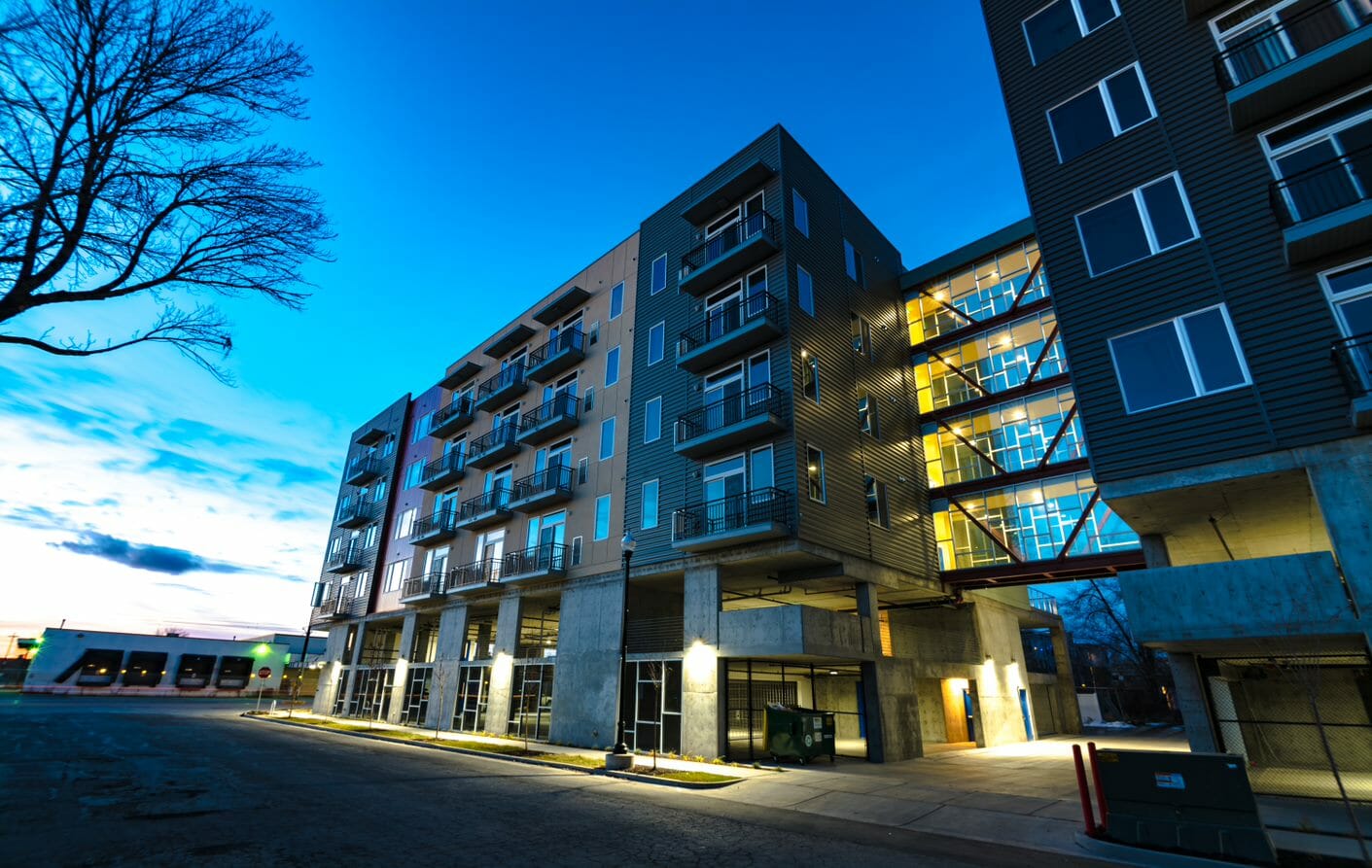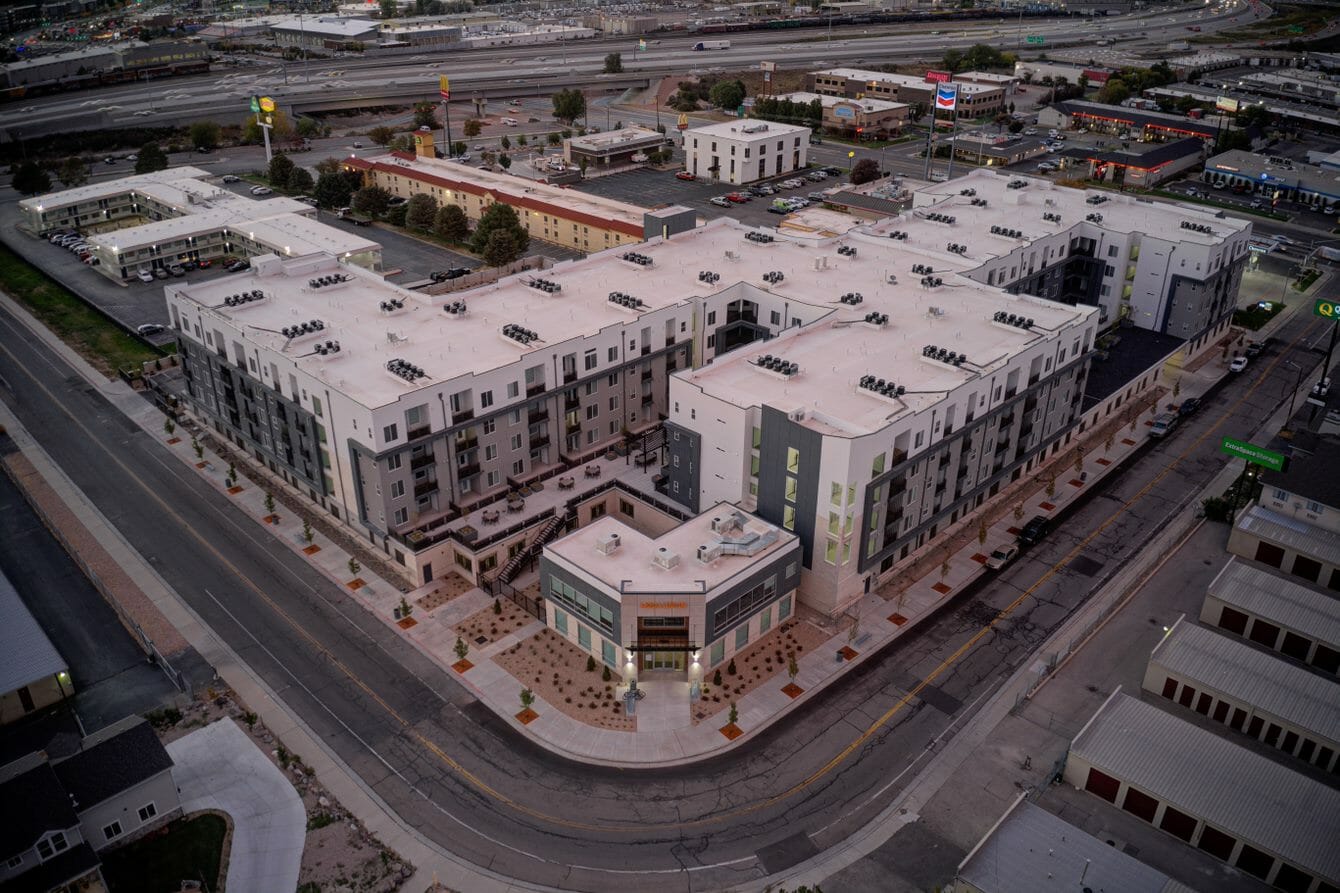
Across the United States, cities and states are focusing on emission reductions and energy cost savings, requiring commercial buildings to track and publicly disclose their performance and consumption. Many states also offer incentives for energy-efficient building.
Residential buyers are also prioritizing energy efficiency. In the latest edition of the National Association of Home Builders’ annual “What Home Buyers Really Want” report, energy-efficient features accounted for three of the top 12 most-wanted items. Additionally, 79% of buyers ranked a whole-home ENERGY STAR rating among the top five most-wanted green features.
When it comes to the ENERGY STAR label, you’re probably familiar with the bright blue sticker. In fact, 90% of American households recognize the ENERGY STAR logo.
While you might already associate the ENERGY STAR label with high-efficiency products, it’s critical to understand what the ENERGY STAR program is and what makes a home or commercial building ENERGY STAR compliant.
When Did the ENERGY STAR Program Start?
The ENERGY STAR program officially launched in 1992, beginning with labeling for office computers and displays. By 1995, the ENERGY STAR program expanded to the residential sector, with programming designed to help homebuyers identify energy-efficient homes.
In 1996, the Environmental Protection Agency and the U.S. Department of Energy (DOE) officially announced their ENERGY STAR partnership, paving the way for unified expansion, beginning with the release of the first ENERGY STAR rating for office buildings.
According to the DOE, the ENERGY STAR program is a joint program between the EPA and the DOE, designed to help individuals and businesses save money and protect the environment through the adoption of energy-efficient products and practices.
Today, the ENERGY STAR label encompasses much more than ENERGY STAR qualified products and appliances. Spanning 33 different industrial sectors, the ENERGY STAR program offers certification for homes, hotels, schools, grocery stores, hospitals, and more.
What Requirements Must ENERGY STAR Compliant Projects Meet?
Depending on the project, the requirements a building or home must meet to earn ENERGY STAR certification vary.
In 2020, more than 6,400 buildings earned the EPA’s ENERGY STAR certification. According to ENERGY STAR, to be ENERGY STAR certified, a commercial building must earn an ENERGY STAR score of 75 or higher on the EPA’s 1-100 scale, indicating that it performs better than at least 75% of similar buildings nationwide.
The 1-100 scale rating is generated by comparing an individual commercial building to similar buildings across the U.S. According to ENERGY STAR, based on information like building size, location, and occupancy number, the score’s algorithm estimates how much energy the building would use if it were the best performing, the worst performing, and every level in between. The end result produces a number that indicates where the original building rates in relation to other similar buildings.
Certification is only awarded on an annual basis and is verified by an independent third party. It’s also important to note that only a registered architect or a licensed professional engineer can verify certification information before it’s submitted for consideration.
An independent third party also grants certifications for ENERGY STAR certified homes. According to ENERGY STAR, new construction homes are certified after an independent inspector verifies a home meets strict requirements addressed by both the builder and rater during design and construction.
For new home construction, a builder or developer must first select an Energy Rating Company to work with prior to submitting architectural plans that outline the energy-efficient features that align with specific state and county requirements.
ENERGY STAR homes include products and features related to four components: efficient lighting and appliances, water protection system, high-efficiency heating and cooling, and a complete thermal enclosure system.
What Are the Benefits of Building an ENERGY STAR Compliant Home or Commercial Space?
Whether residential or commercial, ENERGY STAR compliant building is critical to combating climate change. Since the program was established, ENERGY STAR has helped reduce 4 billion metric tons of greenhouse gas emissions.
Specific to residential homes, sustainable living is increasingly becoming a lifestyle choice that drives home-buying decisions.
Energy-efficient homes tangibly enhance quality of life with added comfort from features designed to circulate fresh air and ensure consistent temperature control. These benefits also translate into extended cost savings, with ENERGY STAR noting its partners, certified products, and programs have helped Americans save $39 billion in energy costs in 2019 alone.
ENERGY STAR compliant homes are more than an investment in consumer comfort and cost savings. Recent studies indicate that certification can measurably increase resale value, with sales price premiums of up to 6% for ENERGY STAR certified homes.
The investment value translates to commercial buildings too — with numerous studies pointing to a sales price premiums from 1%-31% among energy-efficient buildings.
The value of ENERGY STAR buildings also extends to occupancy and rent. Studies show that occupancy levels are up to 10% higher for certified buildings, with rental premiums up to 16% higher than less efficient buildings.
Much like residential buyers, eco-friendly living is central to the beliefs of many sustainably-minded working millennials, who currently make up the largest shares of both homebuyers and the labor force.
According to a recent CONE Communications study, 75% of millennials said they would take a pay cut to work for a more responsible company, demonstrating that their commitment to energy efficiency extends far beyond their home buying behavior.
Where Can I Find ENERGY STAR Compliant Architects in Utah?
If you’re seeking ENERGY STAR certification for a home or commercial space, it’s critical to select an architect with proven ENERGY STAR experience. Architects who specialize in energy efficiency can help you design a custom space that effectively meets rigorous certification requirements and matches your needs.
Whether you’re already planning a project or you have questions about energy-efficient design and construction, the architects at Think Architecture are ready to help. Send us a message for consultation on your commercial or residential project or call our Utah Architects at 801.269.0055


